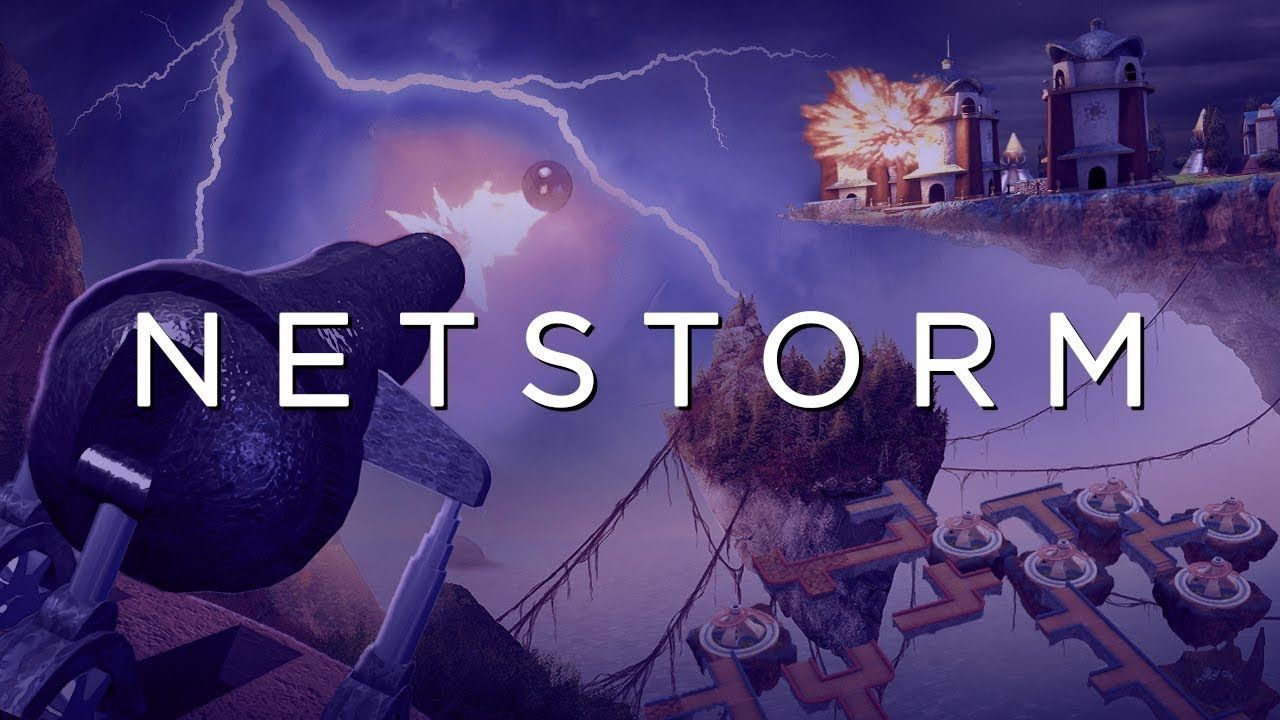Revisiting NetStorm: Islands at War
An enchanting 1997 real-time strategy game that was ahead of its time

At a time when Command and Conquer was beginning to make a dent in the gaming industry, Activision launched a real-time strategy (RTS) game that was similar yet fundamentally different from those that came before it. One built for online play. Ahead of its time.
Not that I had an internet connection back then.
Unlike most RTS games that place an emphasis on mobility and gathering resources, NetStorm puts a tower-defense spin on the classic genre. Stationary towers are your means of offense and defense in Nimbus, a world of floating islands engaged in perpetual chaos. Work with the powers of the four elemental Furies — Sun, Rain, Wind, and Thunder to capture your opponents’ priests. Sacrifice them at your Altar to win the game. Take out the king. It’s effectively chess but with a peculiar layer of complexity. The goal is refreshingly simple for an RTS, part of why it makes it hard to put down.
A colorful disc. 12 megabytes. My archaic PC.
The trials of Nimbus beckon.

Bridges to cross (and burn)
Thunder who is powerful and proud craved the agility and speed of his brother Wind who longed in turn for the rejuvenating powers of Rain. And the envy spiraled. And the Storm under the land rumbled and grew. It was this battle, which rages still, that tattered our land, tore it into bits, and hurled the pieces into the sky: Nimbus as we know it now.
Think of NetStorm as tower-defense meets Chess. A marriage of genres that helped it stand apart from the crowd. But to place said towers across the invisible board, one needs bridges. Incredibly, Titanic Entertainment manages to breathe new life into what may otherwise seem to be a mundane task. Reach the islands of your opponents by picking bridges from a randomized set of pieces that change in shape with every block you place.
This Tetris-esque process that seems out of place in a real-time strategy game actually adds a rather intriguing strategic element to the ordeal of path building. Place bridges too fast and they’ll last as long as a drop of rain on a glass window. Timing them right grants them the strength to withstand explosions from nearby structures.
Bridges are the lifelines of NetStorm. Prime locations for towers, they let you take advantage of potential gaps in your foes’ defenses. Bridges let your Golems gather Storm Power from Geysers, essential to churn out divine artillery left, right, and center. They also let you connect your island to those of your opponents, opening them to attack.
Bridges are important. But what matters more are the beings that tread upon them.

It’s elementary
Each elemental affinity grants you different towers to lay waste to your airborne foes. Often, you will have to trade versatility for sheer power. Or vice versa. While the sun-disc thrower can toss discs in any direction, its range leaves much to be desired. On the other disembodied hand, a Thunder Cannon wreaks havoc across the map but is limited to firing in one direction.
The Fury your Temple is host to dictates your strategy for the rest of the skirmish. Sun units are available to all players; other Furies are pickier. While a more elaborate tech tree or a bigger list of elements would have been welcome, the limited number of pieces on the board means that the learning curve is non-existent, letting newcomers dive right into multiplayer lobbies.
The campaign is nothing to write home about. The objectives are as static as the towers themselves, offering little variety and change in pace. It merely serves as a training zone for the multiplayer component of the game. Well, it does have net in the title…

A game of chess
Excellent netcode lets up to 8 players duke it out on a battlefield suspended in torment. Some servers work to this day, letting nostalgic fans and retro fanatics have a go at the timeless classic. Fan patches and custom servers have made it even easier to play user-created maps with the same chess pieces, no matter the layout of the chessboard. It even has a sense of progression, something most RTS games lack even today. Sacrificing players’ priests in battles grants you the ability to stack up bonuses that stay even after the match ends. But fret not. Effective matchmaking ensures that a newcomer doesn’t face a demigod.
Character dialogues, despite being sparse, are impactful enough to stand out from the solid soundtrack and the destruction that constantly assaults your ears, composed by the man who had worked on PlaneScape: Torment. While all you hear most of the time is the wind blowing (I’m not making this up), it is punctuated by occasional bursts of brilliance. It lends the game a sense of character; one that finds a home among the turbulent skies. Good thing it does, because matches often spiral into towers standing out like weeds all over the map, forming just as quickly as they are destroyed.
Delicately weaving across enemy defenses with generators and towers is a cat-and-mouse game of deception you should experience to truly appreciate. Each unit has been designed with a role in mind, a specific target, and a fatal blind spot. Use these chinks in the pixelated blocks that make up your enemies’ arsenal to smash them to smithereens. The eerie ritual of sacrificing an opponent Priest at your Altar is a reward few games can contend with. It’s not about who gathers the most resources. Nor about the destruction.
Just the Priest. And his inevitable demise at your hands.

Islands fell, empires rose
While NetStorm was a breath of fresh air in a hazy arena of peers that demand resource-gathering and micromanaging, its flaws are hard to ignore. The basic tech tree soon grew long in the tooth and the sea of towers meant that it was more of a waiting game for Geysers, the only resource, to dry up than a decisive battle of wits.
This lets more conventional games unseat NetStorm handily, despite its simplicity and focus on tactical piece placement. Age of Empires was a chore in comparison to the haphazard tower-dropping NetStorm promises. But its web of tech trees and charismatic units gave it an edge that few games had at the time. Grounding it in battles that had actually taken place lent Age of Empires a historic component, one that educated millions while giving young players a great time. A feather in its cap that turned the tide, sweeping Activision’s charming entry under the rug. NetStorm was a commercial flop, but its memory lives on, kept alive by a dedicated fanbase. They found something extraordinary within its simple trappings, a game of pure focus and skill.
Longevity issues aside, NetStorm shines above its contemporaries with its blend of tower defense and strategy, accompanied by a riveting soundtrack. It remains a welcome diversion from the arduous RTS games that took over. After all, 23 years is an eon in video game history.
